 May 4, 2017 John E. Ross, KD8IDJ, Editor
| ||||||||||
Carole Perry, WB2MGP, Set to Host Her 30th Hamvention® Youth Forum Carole Perry, WB2MGP, who may be Amateur Radio's premier supporter of youth, will moderate her 30th Hamvention Youth Forum later this month, when Hamvention® convenes for the first time at its new venue in Xenia, Ohio, May 19-21. And she is showing no signs of "To say I am super excited about my upcoming Hamvention forums is a huge understatement," Perry told ARRL. "While I am always looking forward to my 'Dayton Adventures' every year, this year is especially unique and important to me." Perry praised Hamvention's sponsor, the Dayton Amateur Radio Association (DARA), with setting up her forum in a room where the many loyal Youth Forum followers will be able to support the young presenters in comfort. Here's the 2017 Hamvention Youth Forum lineup:
"Space Weather Woman" Tamitha Skov will speak on "Teaching Space Weather" at the Instructors' Forum on Friday, and about "Space Weather and the Mars Generation" at the Youth Forum on Saturday. Reflecting on her soon-to-be 3 decades of Youth Forum events, Perry said she continues to be impressed at the talented and creative young hams who have spoken at the forum over the years. "Many of them have stayed in touch and report about their school choices and careers, and how their appearance at the Youth Forum influenced those choices," she said.
A "Where Are They Now" video presentation will showcase the post-Youth Forum experiences of those who have participated in the forum over the years. "Mary Alestra, KB2IGG, is part of the video introduced by TV producer John Amodeo, NN6JA," Perry said. "Mary is a former ham radio student of mine. Also on the video, among others, is Don Lafreniere, W8PSP, who met his future wife at the Youth Forum." Perry expressed her gratitude to the many Youth Forum sponsors. As in the past, there will be plenty of prizes. "We promise there will be fun for all and a chance for everyone to show support for our bright and talented young hams," Perry said. "Please join us in supporting the future of ham radio!" Perry will conduct her Hamvention Instructors' Forum on Friday, May 19, 10:30-11:30 AM, in Room 3. Amateur Radio Volunteers Support 2017 Boston Marathon On April 17, nearly 280 Amateur Radio communication volunteers participated in the 2017 Boston Marathon, the 121st running of the event organized by the Boston Athletic Association (BAA). Warmer-than-typical temperatures for the Patriots' Day race raised concern for increased medical issues, but lower humidity and some cloud cover later in the afternoon mitigated the potential for problems.
Amateur Radio's primary communication role involved logistics. Operations included relaying medical resupply requests, picking up runners via medical sweep buses, conveying medical statistics as required by the Red Cross and Massachusetts Department of Public Health, and providing situational awareness as needed along the entire 26-mile route. Amateur Radio also backed up EMS communications, and the team relayed several ambulance requests along the route. Brett Smith, AB1RL, one of the BAA Organizational Committee representatives, said Marathon organizers were very pleased with the efforts of Amateur Radio operators. "Congratulations to everyone on a job very well done," Smith said afterward. "We were braced for a busy day, and our preparation helped see us through to make sure it was never anything we couldn't handle." Smith said that many volunteers enjoyed spending their day supporting the Marathon this year. "We're already seeing e-mails from our volunteers thanking us for our work too. So the work was appreciated not only by organizers from the BAA, but the volunteers as well," he said.
Rob Macedo, KD1CY, the other BAA Organizational Committee representative, reported that state emergency managers were very pleased with the logistics and situational awareness support from Amateur Radio operators. He was stationed at the Multi-Agency Coordination Center (MACC), located at the State Emergency Operations Center (EOC) in Framingham. "At one point mid-afternoon, one of the two finish line medical tents was filled to capacity," Macedo recounted. "The BAA and EMS representatives at the MACC were impressed at receiving the on- and off-diversion reports in a timely fashion from Finish Segment Coordinator Matt Brennan, NM1B."
Start Segment Coordinator Mark Richards, K1MGY, said all of the planning and setup at the race's starting point of Hopkinton paid off. "We provided BAA organizers at the start with an analysis that looks to correlate the planned and actual times of the start of the race very well," he said. Course Field Operations/Course Net Control Segment Coordinator Jim Palmer, KB1KQW, said he was pleased with the performance of the Amateur Radio teams throughout the event. "Numerous course Amateur Radio volunteers have already expressed their appreciation for a well-run, highly organized event, and are already looking toward volunteering at the 2018 Marathon," he said. Course volunteers logged an estimated nearly 1,000 volunteer hours, and Palmer said their support was instrumental to the success of the communication support mission.
Amateur Radio is one of three radio communication systems used for the Boston Marathon. Eight Amateur Radio representatives, including segment coordinators, sit on the BAA Communications Committee with BAA officials and representatives of the Massachusetts State Police and a commercial communications contractor. Boston Marathon Medical Coordinator Chris Troyanos, who chairs the Communications Committee, has let the Amateur Radio community know that it is -- and will remain -- a vital component of Marathon communication support. -- Thanks to Rob Macedo, KD1CY Important Notice -- New MF and LF Bands are Not Yet Available to Use! The new 630-meter and 2,200-meter bands are not yet available for Amateur Radio use. The effective date of the recent FCC Report & Order (R&O) granting these allocations has not yet been determined, and until the start date has been set, it is not legal under an Amateur Radio license to transmit on either band.
Once that happens, the FCC will publish a notice in The Federal Register "announcing such approval and the relevant effective date," the R&O said. ARRL will announce the UTC notification procedures and the effective date to use these new bands as soon as these are known. The Doctor Will See You Now! "End-Fed Antennas" is the topic of the current episode of the "ARRL The Doctor is In" podcast. Listen...and learn!
Every 2 weeks, your host, QST Editor-in-Chief Steve Ford, WB8IMY, and the Doctor himself, Joel Hallas, W1ZR, will discuss a broad range of technical topics. You can also e-mail your questions to doctor@arrl.org, and the Doctor may answer them in a future podcast. Enjoy "ARRL The Doctor is In" on Apple iTunes, or by using your iPhone or iPad podcast app (just search for "ARRL The Doctor is In"). You can also listen online at Blubrry, or at Stitcher (free registration required, or browse the site as a guest) and through the free Stitcher app for iOS, Kindle, or Android devices. If you've never listened to a podcast before, download our beginner's guide. Just ahead: "Optimizing Receiver Performance." Support ARRL as You Shop for Mom
FCC Personal Radio Service Revisions Will Affect GMRS, FRS, CB, Other Part 95 Devices Soon it will be legal for CBers to work DX on 11 meters. In a lengthy Report and Order (R&O) in a proceeding (WT Docket No. 10-119) dating back 7 years, the FCC has announced rule changes affecting the General Mobile Radio Service (GMRS), the Family Radio Service (FRS), the Citizens Band Radio Service (CBRS or "CB"), and other applications that fall under the FCC's Part 95 Personal Radio Services (PRS) rules and regulations. Part 95 devices typically are low-power units that communicate over shared spectrum and, with some exceptions, do not require a license.
GMRS and FRS devices are used for personal communication over several miles; compact FRS handhelds, often sold in pairs, are widely available. While GMRS and FRS share spectrum, GMRS provides for greater communications range and requires an FCC license; FRS does not. "The rules will increase the number of communications channels for both GMRS and FRS, expand digital capabilities to GMRS (currently allowed for FRS), and increase the power/range for certain FRS channels to meet consumer demands for longer range communications (while maintaining higher power capabilities for licensed GMRS)," the FCC explained. The amended rules eventually will eliminate combination FRS/GMRS radios for the most part, but allow up to 2 W PEP output for FRS transceivers. "[M]any current users of GMRS/FRS combination radios do not obtain licenses to operate over the GMRS frequencies in those radios," the FCC said. "Much of this problem likely arises as a result of the mass consumer marketing of combination devices for sale to the public in large quantities to users who do not know about or do not understand the licensing requirements attached to such radios and obligations associated with operating in the GMRS."
The FCC said it no longer will certify FRS devices that incorporate GMRS capabilities or capabilities of other services. Existing GMRS/FRS combination radios that operate at power levels of less than 2 W ERP will be reclassified as FRS devices; existing GMRS/FRS radios that operate above that power level will be reclassified as GMRS devices, requiring an individual license. Radios that can transmit on GMRS repeater input channels will continue to be licensed individually and not by rule. The FCC said changes to the decades-old Citizens Band (CB) rules will remove outdated requirements, including certain labeling requirements. DXing on Citizens Band will become legal too. Once the new rules are effective, CBers will be allowed to contact stations outside of the FCC-imposed -- but widely disregarded -- 155.3-mile distance limit. The revised CB rules further clarify how hands-free devices can be used with CB radios and will allow the use of wireless microphones with CB radios. The FCC left in place the current power limits for the CB Radio Service. Most of the new Part 95 rules will become effective 30 days after their publication in The Federal Register. Read more. More Arduino Projects for Ham Radio by Glen Popiel, KW5GP, Now Available The new book More Arduino Projects for Ham Radio by popular author and experimenter Glen Popiel, KW5GP, builds on the success of his Arduino for Ham Radio. His latest offering includes 15 completely new practical and functional Arduino projects for your station.
"When it comes to the Arduino, you're only limited by your imagination," Popiel said. More Arduino Projects for Ham Radio starts by building a solid foundation through descriptions of the many new Arduino boards and add-on components, followed by a collection of practical ham radio-related projects that showcase a wide variety of applications. There is something here for everyone. More Arduino Projects for Amateur Radio is available from the ARRL Store or your ARRL Dealer. (ARRL Item No. 0703), ISBN: 978-62595-0703, $39.95 retail, special ARRL Member Price $34.95). Call (860) 594-0355 or, toll-free in the US, (888) 277-5289. Harvard Wireless Club Sponsors Inaugural Amateur Radio Symposium The Harvard Wireless Club (W1AF) sponsored its first Amateur Radio Symposium on April 29 in Cambridge, Massachusetts. The symposium featured speakers from the University and elsewhere, including appearances by W1AF's incoming president Ben Lee, K7JS, and the club's outgoing president Douglas Maggs, KK4UHK. They were joined by Yale University Amateur Radio Club (W1YU) President Scott Matheson, N3NFP; First Vice President James Surprenant, AB1DQ, and past president Martin Ewing, AA6E, in recounting the distinguished histories of these two collegiate Amateur Radio clubs.
Flavio Jorge, CT7AQK, of the University of Aveiro in Portugal, discussed microwave propagation for space systems in his presentation, "Knocking down walls, changing mentalities and breaking rules -- a case study on radiowave propagation for space systems." Emeritus professor of electrical engineering Paul Horowitz, W1HFA, delivered a thoroughly enjoyable presentation and discussion of the ultimate DX -- monitoring the universe in a search for extraterrestrial intelligence. Matheson and Ewing participated in a roundtable forum, "Youth in Amateur Radio." That group was joined later via Skype by Martin Atherton, G3ZAY, the master of Cambridge University's Wireless Society (G6UW), and two of his student colleagues. Vasiljie Perovic, M0HZC, spoke on "Extremely Low Frequency meteor detection," while William Eustace, M0WJE, discussed "LoRa⢠spread spectrum radio."
Others taking part were Daniela Marcelino, CR7AQM, and Micael Rebelo, CR7AQL, of the University of Aveiro, and Nicolas Weninger, KC1GLI, and Saahil Mehta, KG5HEW, both of Harvard. Also on hand was ARRL CEO Tom Gallagher, NY2RF, who presented a progress report from League Headquarters and emphasized the need to welcome new hams into the Amateur Radio community. Attorney Fred Hopengarten, K1VR, shared some of his career highlights in his talk, "Ham radio pays my mortgage and other thoughts." Hopengarten is the author of the book Antenna Zoning for the Radio Amateur. "The Harvard Wireless Club made a strong showing on Saturday," Gallagher said afterward. "They combined excellent material with a fast-paced program that never bogged down -- from Professor Paul Horowitz's description of chasing DX across the universe to live transatlantic conversations with Cambridge University's radio club members."
Attendee George Allison, K1IG, summed up the proceedings this way: "A full day with no fluff...accomplished and proficient speakers...absorbing and enlightening...wholehearted League support...and all-you-can-eat free ice cream is always a winner!" Last fall, ARRL announced its Collegiate Amateur Radio Initiative (CARI) to assist college and university ham radio clubs in collaborating and networking. The community has grown rapidly since then, with membership in the Facebook CARI group growing fivefold to nearly 500 individuals. ARRL will sponsor a CARI forum at Hamvention later this month in Xenia, Ohio (Saturday, May 20, at 12:30 PM in Room 4). Broadcast Industry Radio Amateurs Gather at Annual NAB Convention in Vegas A few thousand of the more than 103,000 broadcasting industry professionals from around the world that gathered in Las Vegas April 22-27 for the National Association of Broadcasters (NAB) convention were radio amateurs. Nevada Section ARRL volunteers, under the guidance of Section Manager John Bigley, N7UR, and assisted by Section Public Information Coordinator Chuck Farnham, WD6CHC, were on hand to greet visitors and answer any questions they might have about ARRL membership and benefits, FCC regulations, licensing, operating activities, and other Amateur Radio topics.
"A large number of those hams stopping by the ARRL booth were international visitors, including Ajaya Gupta, VU2DED, of Mumbai, India, who presented the Nevada hams with a statuette of the State Emblem of India, which was adopted when India became a republic in 1950," recounted Bigley. "The statuette was displayed in the booth for the duration of the convention." Bigley said booth visitors also came from Germany, Italy, the United Kingdom, China, South Korea, Brazil, the Netherlands, Japan, Canada, Mexico, Australia, and New Zealand. On Wednesday, April 26, Nevada amateurs also joined hundreds of their colleagues from around the world at the annual Amateur Radio Operators Reception hosted by the NAB, DX Engineering, Broadcast Supply Worldwide, and Turner Engineering. Bigley welcomed the visitors to Las Vegas, acknowledged the hard work of the ARRL volunteers staffing the booth, and thanked attendees for their continued support of the NAB convention, and for making Las Vegas and the ARRL Nevada Section a part of their event. An article in the Las Vegas Review Journal focused on the Amateur Radio reception. "People say that Amateur Radio is dead," Farnham told reporter Todd Prince. "Well, there are ham radio operators every 3 feet on the NAB floor." Read more. In Brief...
The K7RA Solar Update Tad Cook, K7RA, Seattle, reports: Each of the weekly solar and geomagnetic indicators that we track were lower this week. The average daily sunspot number dropped 10.6 points to 25.1, and the average daily solar flux was 4.5 points lower than the previous week at 76.9.
As of May 3, the predicted solar flux is 75 on May 4-7; 74 on May 8; 75 on May 9-11; 73 on May 12; 75 on May 13-14; 80 on May 15-18; 85 on May 19-21; 80 on May 22-23; 77 on May 24-27; 75 on May 28-30; 73 on May 31-June 8; 75 on June 9-10; and 80 on June 11-14. Predicted planetary A index is 12, 8, 8, 5, and 10 on May 4-8; 5 on May 9-14; 8, 15, 30, and 25 on May 15-18; 45, 50, 15, 10, and 8 on May 19-23; 5 on May 24-27; 12 and 8 on May 28-29; 5 on May 30-June 1; 8 on June 2-4; 5 on June 5-10; 8, 15, 30, 25, 45, and 50 on June 11-16. Bob Kile, W7RH, of Las Vegas, Nevada, took advantage of a 6-meter sporadic-E opening on May 3, working stations in Texas, Wyoming, Idaho, and Colorado. Two Wyoming stations were "solid copy for several hours" before the band closed. (Bob also has a 160-meter remote base in the Northern Arizona desert. More information is on his website.) Sunspot numbers for April 27 through May 3, 2017 were 23, 35, 34, 33, 11, 25, and 15, with a mean of 25.1. The 10.7-centimeter flux was 78.2, 78, 77, 77.4, 75.3, 77.2, and 74.9, with a mean of 76.9. Estimated planetary A indices were 7, 6, 6, 6, 5, 5, and 4, with a mean of 5.6. Estimated mid-latitude A indices were 10, 6, 6, 6, 5, 4, and 2, with a mean of 5.6. Send me your reports and observations. Just Ahead in Radiosport
See the ARRL Contest Calendar for more information. For in-depth reporting on Amateur Radio contesting, subscribe to The ARRL Contest Update via your ARRL member profile e-mail preferences. Upcoming ARRL Section, State, and Division Conventions
Find conventions and hamfests in your area.
. .
Subscribe to...
Free of charge to ARRL members...
Find ARRL on Facebook! Follow us on Twitter and Instagram! | ||||||||||
-th.jpg) slowing down. The Youth Forum is set for Saturday, May 20, 9:15 AM until noon, in Room 2. She's lined up nine young presenters who will speak on a variety of topics of interest to radio amateurs of all ages. The Youth Forum is open to all.
slowing down. The Youth Forum is set for Saturday, May 20, 9:15 AM until noon, in Room 2. She's lined up nine young presenters who will speak on a variety of topics of interest to radio amateurs of all ages. The Youth Forum is open to all..JPG)
.jpg)
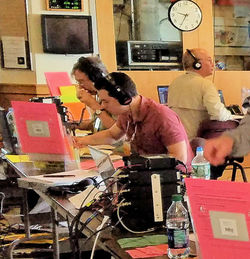
.JPG) Course volunteer Matt Knowles, KC1AEI, was among them. "I feel like Amateur Radio plays an important role in the safety and security of the Boston Marathon," he said. "Our net operators were succinct, clear, and very patient as we took care of our individual responsibilities on the course. All of the communications volunteers put forth a unified effort on Monday, which made for another successful race."
Course volunteer Matt Knowles, KC1AEI, was among them. "I feel like Amateur Radio plays an important role in the safety and security of the Boston Marathon," he said. "Our net operators were succinct, clear, and very patient as we took care of our individual responsibilities on the course. All of the communications volunteers put forth a unified effort on Monday, which made for another successful race."-detail.jpg)
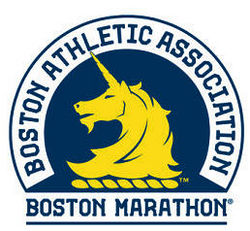 At the Course Net Control Operations Center in Brookline, students from Dexter-Southfield School provided support to net control operators during the event. Numerous nets cover the Marathon course, and all are run from this single location. Students regularly updated status boards, informing both local net control operators and the other net control operations centers of each ham radio volunteer's location. Veteran net control operators dedicated some time to work with the students to teach them how marathon nets operate, providing a robust ham radio learning experience in an educational setting.
At the Course Net Control Operations Center in Brookline, students from Dexter-Southfield School provided support to net control operators during the event. Numerous nets cover the Marathon course, and all are run from this single location. Students regularly updated status boards, informing both local net control operators and the other net control operations centers of each ham radio volunteer's location. Veteran net control operators dedicated some time to work with the students to teach them how marathon nets operate, providing a robust ham radio learning experience in an educational setting.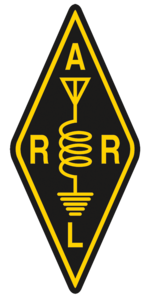 The fact that the new rules contain a new information-collection requirement -- notification of operation to the United Telecoms Council (
The fact that the new rules contain a new information-collection requirement -- notification of operation to the United Telecoms Council (.jpg) Sponsored by
Sponsored by  Mother's Day is Sunday, May 14. If you're looking for the perfect gift, we invite you to shop at
Mother's Day is Sunday, May 14. If you're looking for the perfect gift, we invite you to shop at .jpg) "This draft Report and Order completes a thorough review of the PRS rules in order to modernize them, remove outdated requirements, and reorganize them to make it easier to find information," the FCC said in a summary attached to the R&O.
"This draft Report and Order completes a thorough review of the PRS rules in order to modernize them, remove outdated requirements, and reorganize them to make it easier to find information," the FCC said in a summary attached to the R&O.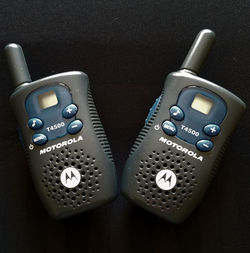
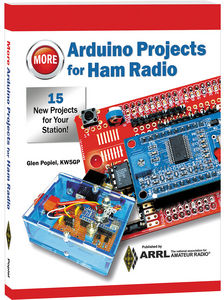 This time, Popiel branches out to use some of the newer Arduino variants and devices. Each project is complete and functional as-is, but the author leaves room for your personal touches and enhancements. That's part of the fun of the Arduino and Open Source communities -- building on the work of others, and then sharing your designs and innovations for others to learn, modify, and improve.
This time, Popiel branches out to use some of the newer Arduino variants and devices. Each project is complete and functional as-is, but the author leaves room for your personal touches and enhancements. That's part of the fun of the Arduino and Open Source communities -- building on the work of others, and then sharing your designs and innovations for others to learn, modify, and improve.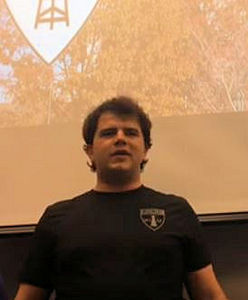
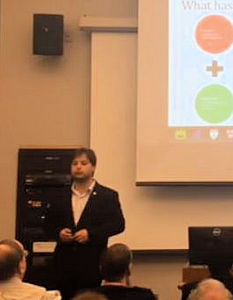
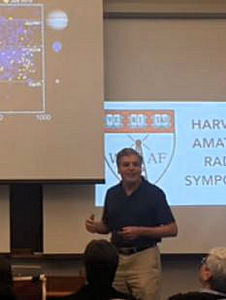

 ARRL Website Outage Set for May 8: The
ARRL Website Outage Set for May 8: The  Deadline for the QST Antenna Design Competition is June 1! The deadline to submit entries for the 2017 QST
Deadline for the QST Antenna Design Competition is June 1! The deadline to submit entries for the 2017 QST  Storm-Related Mishap Claims Life of Volunteer Fire Chief Doug Deckard, KC5PLA: Scotty Douglas "Doug" Deckard, KC5PLA, of Quitman, Arkansas, died on April 30 after being struck by a car during torrential rainfall while checking water lines in his community. Deckard, an ARRL member, was 51. He served as Cove Creek/Pearson Volunteer Fire Chief. Arkansas State Police say Deckard had pulled off the roadway along Highway 25 near Quitman and was working outside of his vehicle when he was hit. He had served as a firefighter for more than 30 years and was the coordinator of the Cleburne County Search and Rescue Team. Deckard also was a dealer for Hytera radio products. "He was a wonderful member of our community, and his kindness, work ethic, and enthusiasm will be sorely missed," the Cleburne County Sheriff's Office said in a statement. "His willingness to serve our community should be a shining example to us all." -- Thanks to Roger Gray, N5QS, for some information
Storm-Related Mishap Claims Life of Volunteer Fire Chief Doug Deckard, KC5PLA: Scotty Douglas "Doug" Deckard, KC5PLA, of Quitman, Arkansas, died on April 30 after being struck by a car during torrential rainfall while checking water lines in his community. Deckard, an ARRL member, was 51. He served as Cove Creek/Pearson Volunteer Fire Chief. Arkansas State Police say Deckard had pulled off the roadway along Highway 25 near Quitman and was working outside of his vehicle when he was hit. He had served as a firefighter for more than 30 years and was the coordinator of the Cleburne County Search and Rescue Team. Deckard also was a dealer for Hytera radio products. "He was a wonderful member of our community, and his kindness, work ethic, and enthusiasm will be sorely missed," the Cleburne County Sheriff's Office said in a statement. "His willingness to serve our community should be a shining example to us all." -- Thanks to Roger Gray, N5QS, for some information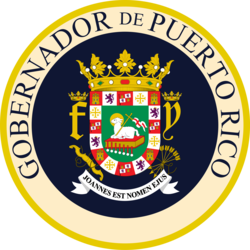 May 9 is Puerto Rico Amateur Radio Operator Day: On Tuesday, May 9, Radio Amateurs in Puerto Rico will celebrate Puerto Rico Amateur Radio Operator Day (Dia del Radioaficionado), observed each year on the second Tuesday in May. This year marks the 20th anniversary of the first celebration. The Amateur Radio Operator Day
May 9 is Puerto Rico Amateur Radio Operator Day: On Tuesday, May 9, Radio Amateurs in Puerto Rico will celebrate Puerto Rico Amateur Radio Operator Day (Dia del Radioaficionado), observed each year on the second Tuesday in May. This year marks the 20th anniversary of the first celebration. The Amateur Radio Operator Day 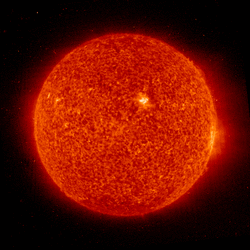 We have not witnessed a day with zero sunspots since April 17. The average planetary and mid-latitude A indices were both 5.6, down from the previous week, when the numbers were 26.4 and 18.4, respectively.
We have not witnessed a day with zero sunspots since April 17. The average planetary and mid-latitude A indices were both 5.6, down from the previous week, when the numbers were 26.4 and 18.4, respectively.







